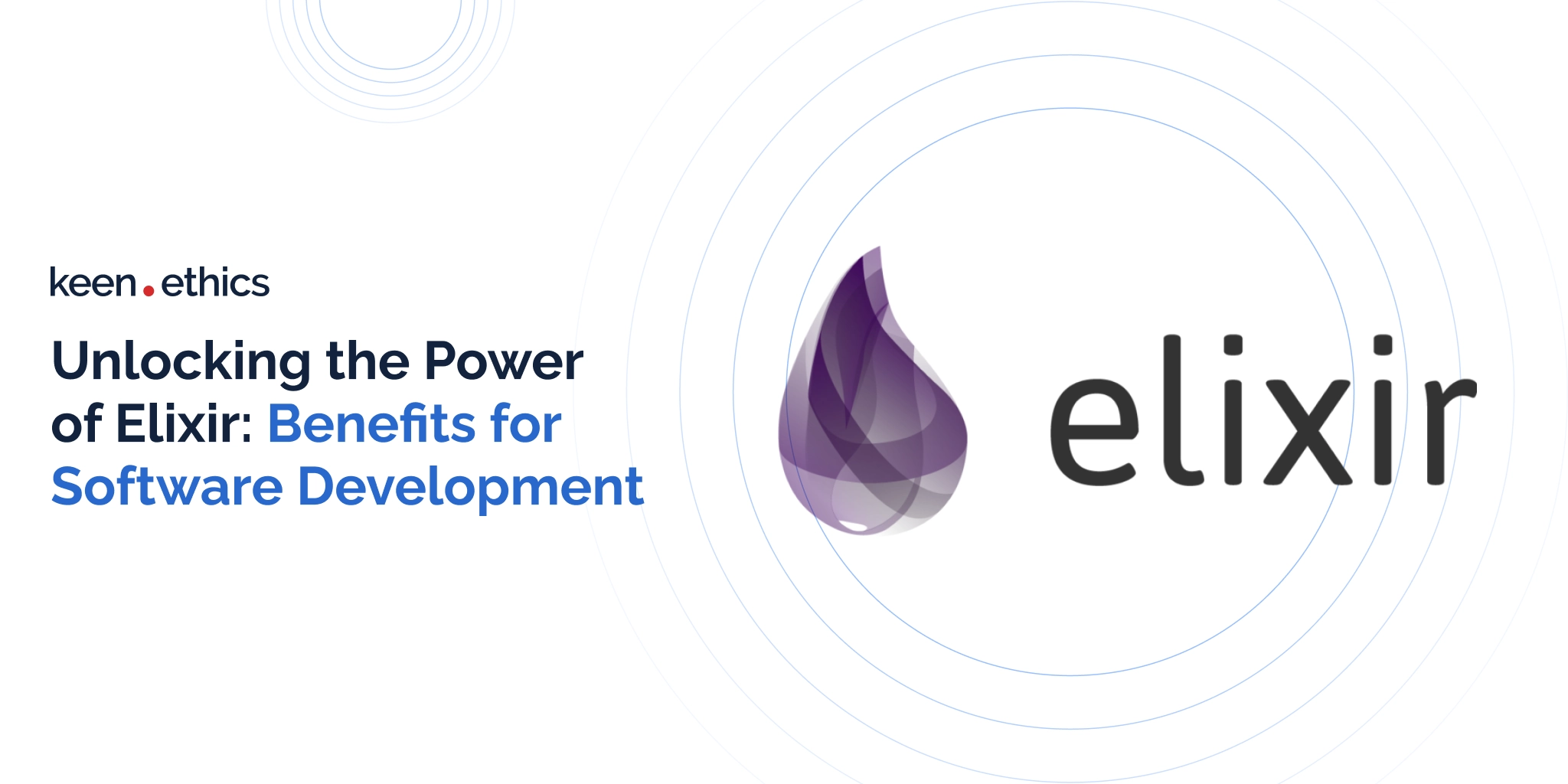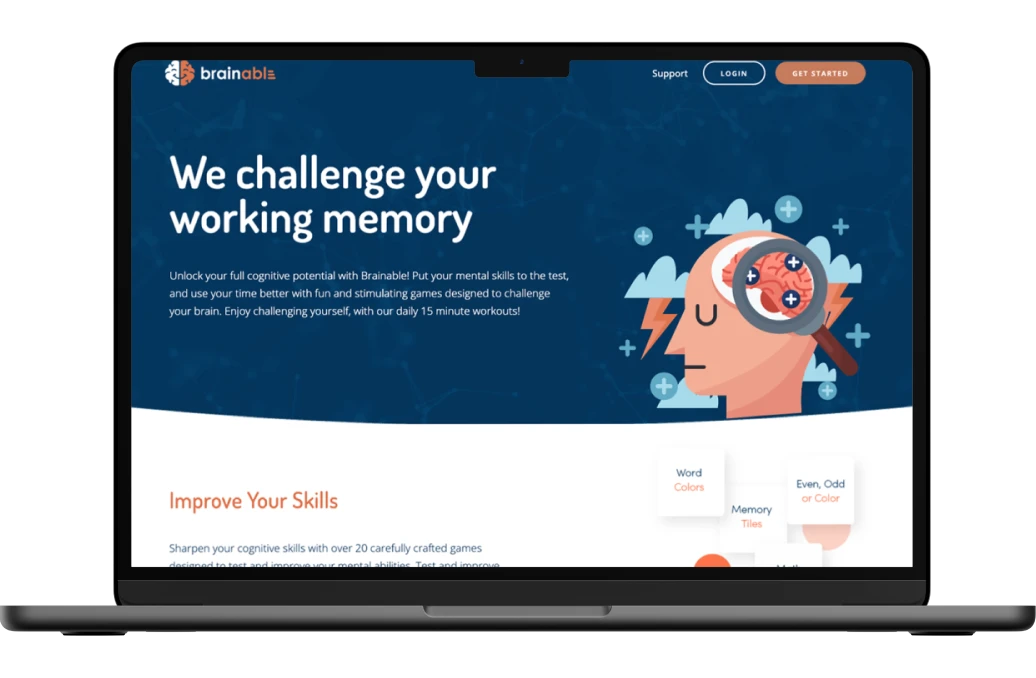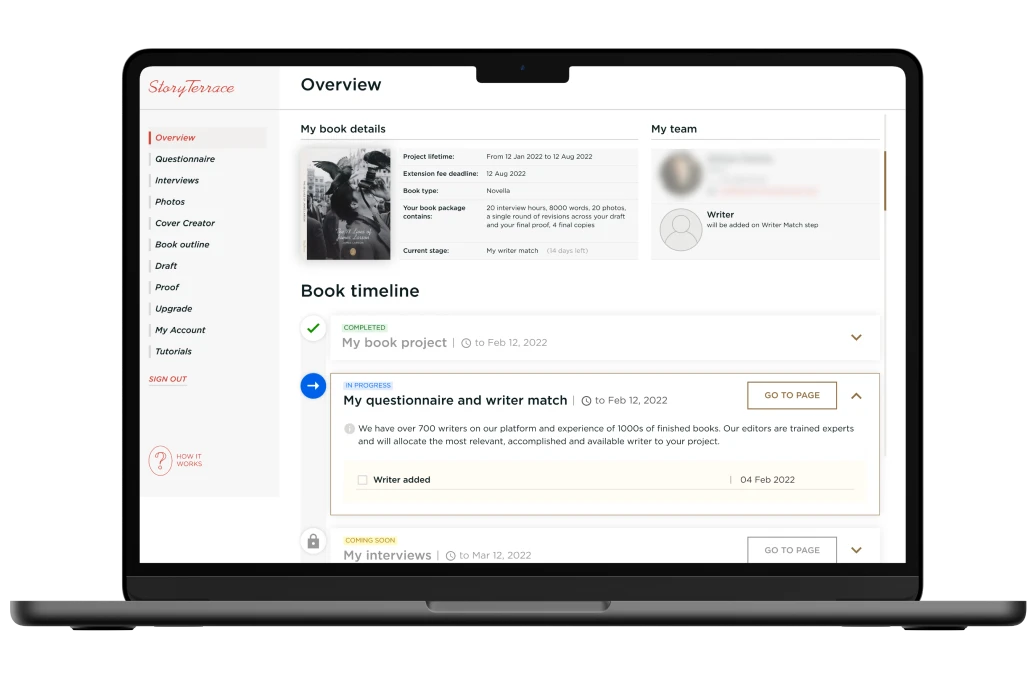Learn how to leverage the power of Elixir to unlock maximal benefits in software development!
One of the most significant challenges that befall web and mobile applications that have to process user information on their servers is the issue of scalability and stability. When faced with many user queries, those platforms run a massive risk of encountering technical problems. The problems become especially significant when one module failure can lead to a cascade of failures across an entire application.
Is there a solution to this challenge? Yes! It comes in the form of Elixir, a backend programming language based on Erlang VM, a technology developed specifically for the telecommunication industry. This industry faces many of the same challenges modern software encounters, such as numerous user queries and stability concerns.
One of the core advantages of Elixir, inherited from telecommunication solutions, is its capability to withstand module failures without disrupting the functionality of other components and even engage in self-recovery processes. In this article, we’ll describe the core advantages of Elixir application development. We’ll also present Keenethics’ perspective on this programming language, enhanced by our advanced manufacturing, agriculture, education, and real estate expertise.
Why Choose Elixir in Modern Web and Mobile Apps?

Elixir is a programming language that solves many growth pains innovative startups and mature projects face. Firstly, the platform uses Erlang VM, which follows the “Let It Crash” formula. According to it, the failure of one module should not lead to the failure of all others. Instead of restarting everything, Erlang restarts only the failed process without affecting everything else.
Secondly, Elixir software development process is tailored specifically towards handling many low-resource tasks. It uses functional programming, which enables the creation of custom syntaxes or Domain-Specific Languages. More importantly, its code foregoes a traditional Object-Oriented approach, providing the users with comfortable high-level functions and immutable variables. All this makes backend web development easy to handle and maintain, saving enormous amounts of time for all stakeholders.
Main Elixir Use Cases
The benefits of Elixir shine in systems that need to handle many small-scale user requests. For example, let’s imagine a fitness band project combining a particular piece of hardware that collects users’ data with processing on the server backend. The incoming data requests and necessary processing don’t require significant resource expenditures. However, there may be millions of users who send data to the servers every day. Elixir and Erlang VM were explicitly created with those use cases in mind. As a result, the framework is excellent for the following types of projects:
- Real-time apps (such as live chats or messaging);
- Websites that handle many small user requests (web stores, banks, and streaming services);
- All types of distributed systems (microservices, distributed databases, cloud applications);
- APIs and other frameworks that need fault tolerance (telecommunication software, financial frameworks, and healthcare applications);
- Blockchain development tools and various cryptocurrencies associated with them;
- Internet of Things backend applications.
As you can find out on the official website of Elixir, many of the approved cases follow these tendencies, with projects and companies like Heroku (a primary cloud service provider), Discord (one of the most popular text and voice chat apps), and Pepsico (one of the largest beverage producers in the world), using it to process small queries and structure collected data.
Key Benefits of Elixir Programming Language

Elixir as a programming language has a tremendous number of positive features that make it highly useful for any firm that adopts it:
Easy-to-use functional programming syntax
Elixir is a functional programming language that aims to make code easy to maintain. It achieves this goal through the usage of immutable data and high-level functions. Firstly, Elixir creates new data structures instead of modifying the existing ones every time a change in a variable occurs. In this way, it prevents unexpected code behavior. Secondly, it uses many high-level functions instead of the more basic ones in languages like Java and C++, simplifying the task of creating complex code and organizing it in an easy-to-read format. As a result, Elixir allows developers to create high-quality apps at a much faster rate, as they don’t have to care about many traditional obstacles like mutable data.
Flexibility and scalability
Elixir is a highly scalable and flexible language. It achieves this goal through the use of the Erlang VM. This VM is fault-tolerant: if one module within the executed code fails, it won’t stop the entire executed app. Instead, it tries to restart the failed bits of code without disrupting anything else. The language achieves this by, for example, using immutable data structures, which prevent difficult-to-trace problems, such as unexpected variable changes. As a result, Elixir code is easy to deploy due to its functional structure and relatively easy to maintain.
Erlang VM
A vital feature of Elixir is the Erlang VM. It’s a virtual machine of an older programming project, Erlang, developed explicitly for the telecommunication sector. This project is notable for its very high level of stability and industry-defining fault-tolerance. The problem with Erlang as a programming language is that it uses a somewhat outdated syntax, which may be unfamiliar to web and mobile developers. Most Erlang specialists are concentrated in telecommunication and healthcare, meaning that the language is very niche. Elixir software development is an answer to this problem: it uses Ruby-like syntax combined with the core advantages of Erlang’s virtual machine to promote popular use.
High stability and fault tolerance
Erlang VM, central to Elixir as a programming language, was developed with fault tolerance in mind. This means that this development platform can restore itself seamlessly despite the failure of singular modules. If one module fails (for example, this can be the chat module), Erlang VM won’t disrupt the entire app, requiring a restart. Instead, it will simply try to restart the particular module. In this way, the platform prevents situations where one error can lead to massive downtime for an entire project. In more traditional development, the ability to form resilience to this type of issue requires a long development process supervised by a very experienced team. With Elixir, however, all those features come pre-packaged by default.
Ease of Expansion
Elixir developers have access to this platform’s Domain-Specific Language paradigm. What does it mean in practice? DSL offers the capability to create your own functions within Elixir and come up with your original syntax for them. So, in practice, this means that you can create a set of macros that will allow you to develop custom “languages” for different tasks, such as web development or database management. In this way, Elixir development gets an element of endless progression: there’s always more customization that can be done within the platform at any given point.
Powerful and Well-Maintained Ecosystem
The Elixir ecosystem is probably among the best in structure and maintenance on the market. Indeed, it isn’t the biggest; however, it’s the most cohesive to date. The users have access to numerous libraries that help with some of Elixir’s most widespread use cases. More importantly, the platform is compatible with Erlang libraries and Erlang VM, allowing you to use the combined experience of developers within the telecommunication field. Lastly, Elixir programming language is the basis for Phoenix, a web framework for creating sites. As a result, it’s well-integrated with it, enabling the users to create real-time web apps through a feature called Phoenix LiveView.
In-Built Dependency Management
Elixir software development experience is also further improved through in-built dependency management within the platform. Elixir handles packages through a manager called Hex and then builds apps based on its Mix Build Tool. Mix and Hex interact efficiently: Mix can detect lacking dependencies and automatically resolve conflicts or deficiencies through Hex. This approach adds further fault tolerance to the platform, as there’s a lower chance of bugs occurring within it with such an approach.
High multitasking performance
Elixir has industry-defining performance in environments that require a significant amount of multitasking. It can handle dozens of processes simultaneously as long as the utilized hardware enables one to use them. Concurrency is among the defining features of Elixir as a framework. Consequently, you can configure its usage through a straightforward set of commands. This approach removes the typical user pains of enabling all concurrent tasks on other platforms.
Anonymous functions
Elixir enables the use of so-called anonymous functions, also known as closures. These functions can remember the original variables given to them, preventing the need to complicate the code by redefining those variables repeatedly. This factor enables the platform to achieve low latency performance by relying on less complex and more efficient code. As you can see, Elixir development was created to maximize comfort for the end users.
Error Prevention Through Pattern Matching
Elixir also has built-in functions to prevent hidden bugs from accumulating in your app. How does it achieve this goal? Elixir enables the development of maintainable applications through pattern matching. Its compiler can check your code for structure, informing you whether the definitions of certain variables interact correctly. For example, suppose you accidentally forget to add some values; in that case, Elixir won’t allow you to run the code without additional configuration: {name, age} = {“Alice”} line is invalid (it has to be {name, age} = {“Alice”, 25} to function). In this way, the platform prevents the accumulation of errors throughout initial development and the creation of new features during more active maintenance.
Elixir: Challenges and Limitations

Elixir is a platform with many amazing features that save a lot of time, such as pattern matching and tools for real-time development. However, Elixir software development isn’t without issues.
Firstly, the platform has relatively poor multithreading support, thus limiting advanced calculations, which are easy to perform in languages like C# or Python.
Secondly, it’s relatively new, and, as a result, its support for certain features is limited. Moreover, the telecommunication legacy of the platform creates a situation in which primary development efforts go into tasks with similar characteristics in web and mobile development.
Lastly, Elixir is generally easy to use, but there’s a catch: some of its approaches, such as functional programming and closures, are somewhat unorthodox, requiring some time for relearning from developers.
Main Industries That Can Benefit From Elixir
Elixir is of great use in the following industries due to its open-source nature, reliability, and low response times under conditions of high user traffic:
- Finance & Banking
- E-commerce
- Telecommunications
- Healthcare & Telemedicine
- Gaming & Multiplayer Servers
- Social Media & Messaging Apps
- IoT (Internet of Things)
- Video Streaming & Live Broadcasting
- Ad Tech & Real-time Bidding
- Automotive & Smart Vehicles
- Supply Chain & Logistics
- Cybersecurity & Fraud Detection
- Cloud Services & Distributed Systems
- Customer Support & Chatbots
- Energy & Smart Grid Systems
Elixir and Its Future

Elixir development has a promising future in modern software development, even though it still has rather low adoption rates today. More and more big companies like Pepsico are using the language due to its high levels of scalability and ease of use in an average software development project.
Every platform needs time to mature: Elixir is out of its early development stages but is relatively young by software development standards (it was created in 2012 as opposed to C#, which appeared 25 years ago). Factors contributing to the growth and popularity of Elixir software development are diverse: they include its internal strengths that help solve the current development challenges and its future orientation, as the platform is well-optimized for the ever-growing IoT and blockchain markets.
Conclusion
To summarize, we highly recommend using Elixir for web development and web applications in particular. Elixir development is notable for its ease (despite a slightly steep initial learning curve). More importantly, the platform saves many hours on maintenance. We at Keenethics have already used it for multiple projects and concluded that it enhances customer satisfaction due to the combination of the abovementioned factors. If you would like to capitalize on those benefits, don’t hesitate to contact us: we have more than 9 years of experience developing products through Elixir and frameworks like Node.js.












